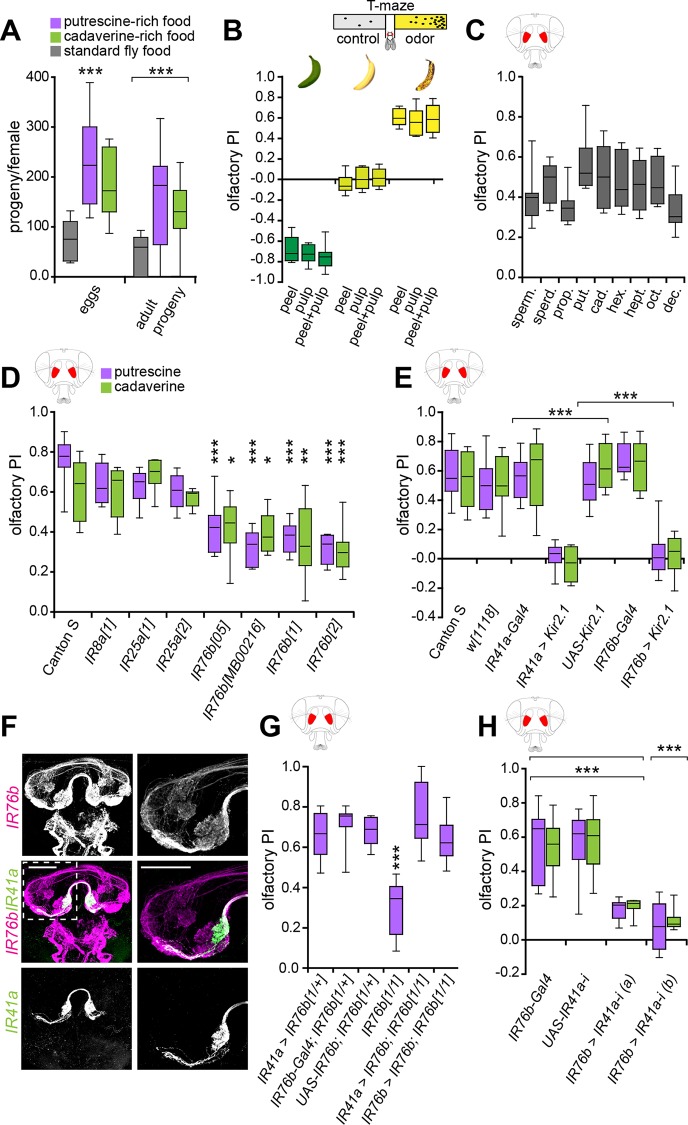Fig 1. IR41a and IR76b mediate olfactory attraction to polyamines.
(A) A diet high in polyamines increases reproductive success. Single males were crossed with single females in two different conditions for 4 d. Standard fly food and fly food with additional putrescine or cadaverine solution (~2.5 mmol polyamine/l of food). The number of eggs laid per single female and the number of eclosed flies per single female was quantified. Box plot show median and upper/lower quartiles (n = 8, 2 flies/trial 1 ♀ and 1 ♂). (B) Schematic illustration of the T-maze assay (top). Drosophila is attracted to the smell of overripe banana. Bars show olfactory preference index (PI) of wild type Canton S flies to peel, pulp, and peel + pulp of green banana, just yellow banana and brown-speckled banana, respectively. y-axis value of 0 indicates indifference while positive values indicate the degree of attraction and negative values indicate aversion. Box plots show median and upper/lower quartiles (n = 8, 60 flies/trial, 30 ♀ and 30 ♂). (C) Flies are attracted to several polyamines (of chain lengths C3-C10) with different sensitivities. Graph shows olfactory PI of wild type flies to 1 mM spermine (sperm.), spermidine (sperd.), diaminopropane (prop.), putrescine (put.), cadaverine (cad.), diaminohexane (hex.), diaminoheptane (hept.), diaminooctane (oct.), and diaminodecane (dec.), respectively. Box plots show median and upper/lower quartiles (n = 8, 60 flies/trial, 30 ♀ and 30 ♂). (D) Olfactory PI of Canton S (control) and IR mutant flies to putrescine and cadaverine in the T-maze assay. Box plots show median and upper/lower quartiles (n = 8, 60 flies/trial, 30 ♀ and 30 ♂). Asterisks denote significant reduction in olfactory preference to putrescine and cadaverine. (E) Bar graph shows olfactory PI of IR41a-Gal4;UAS-Kir2.1 and IR76b-Gal4;UAS-Kir2.1 with Canton S and genetic controls to putrescine and cadaverine in the T-maze assay. Asterisks denote a significant reduction in olfactory preference to putrescine and cadaverine. Box plots show median and upper/lower quartiles (n = 8, 60 flies/trial, 30 ♀ and 30 ♂). (F) Costaining of IR41a-Gal4;UAS-mCD8GFP (green) and IR76b-QF;QUAS-mdtomato (magenta) in the fly brain. The boxed region is centered on the AL, which is shown enlarged in the right panels. IR41a and IR76b expressing axons coinnervate a single glomerulus (VC5) in the AL. (G) IR76b is necessary in IR41a neurons to mediate the behavioral response to polyamine odor. IR76b was re-expressed in the IR76b mutant background using IR76b-Gal4 or IR41a-Gal4. While IR76b mutants show a significantly reduced response to putrescine, re-expression of IR76b in either IR76b or IR41a neurons fully rescued this defect. (H) IR41a receptor is essential for polyamine attraction. Bar graphs show olfactory PIs of flies carrying IR76b-Gal4;UAS-IR41a-RNAi of two different RNAi transgenes flies and their genetic controls to putrescine and cadaverine in the T-maze assay. Box plots show median and upper/lower quartiles (n = 8, 60 flies/trial, 30 ♀ and 30 ♂). All p-values were calculated via two-way ANOVA with the Bonferroni multiple comparison posthoc test (ns > 0.05, *p ≤ 0.05, **p ≤ 0.01, ***p ≤ 0.001). In all figures, asterisks above a single bar refer to p-values of comparison to the control (first bar of the panel). Lines joining two bars or groups of bars denote all other comparisons.

